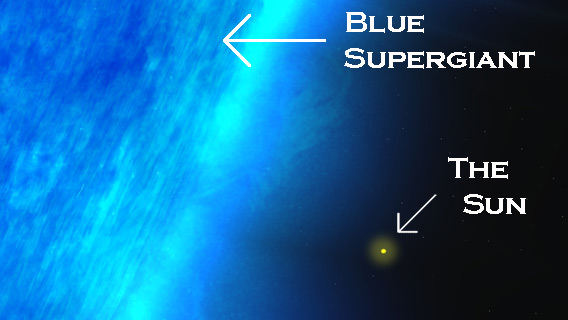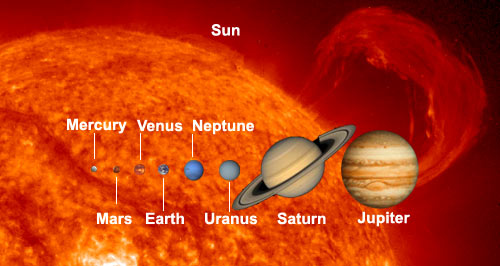How does water change the Moon's origin story?
http://www.sciencedaily.com/releases/2018/02/180227091646.htm
Is a wet Moon incompatible with a giant impact formation?
Date:
February 27, 2018
Source:
Carnegie Institution for Science
Summary:
The Moon formed when an object collided with the proto-Earth. For years, scientists thought that in the aftermath, hydrogen and other so-called 'volatile elements' escaped and were lost to space. This would have led to a dry and volatile element-depleted Moon, which seemed to be consistent with previous analyses of lunar samples. But ongoing research about the Moon's chemistry is revealing that it may be wetter than initially thought, raising questions about this origin story.
AND
The moon formed inside a vaporized Earth synestia
http://www.sciencedaily.com/releases/2018/02/180228103238.htm
Date:
February 28, 2018
Source:
University of California - Davis
Summary:
A new explanation for the Moon's origin has it forming inside the Earth when our planet was a seething, spinning cloud of vaporized rock, called a synestia. The new model resolves several problems in lunar formation.
In the canonical model of the Moon’s formation the proto-Earth was hit by a Mars-sized object between 4.4. and 4.5 billion years ago.
Ongoing research about the Moon's chemistry is revealing that it may be wetter than initially thought, which raises questions about some aspects of this origin story.
"This is still very much an area of active research, so there is much that scientists, including our Department of Terrestrial Magnetism staff scientist Erik Hauri, as well as many other Carnegie colleagues and alumni, are figuring out about how much water exists in the Moon. This is a highly important and challenging question to answer given that we have limited knowledge on the history and distribution of lunar water," explained Carnegie's Miki Nakajima who, together with Caltech's Dave Stevenson, set out to determine whether prevailing Moon-formation theories needed to be adjusted to account for the more recent higher estimates of lunar water content.
The work is published by Earth and Planetary Science Letters.
"The good news is that our models show that observations of a wet Moon are not incompatible with a giant impact origin," Nakajima explained.
However, it also means that scientists need to come up with other explanations for why the Moon is depleted of potassium, sodium, and other volatile elements. Other possibilities exist, such as the volatile elements in the disk falling onto Earth rather than escaping or being part of the Moon's formation. Or potentially they were part of the Moon when it first accreted from the post-collision disk but were later lost.
A new explanation for the Moon's origin has it forming inside the Earth when our planet was a seething, spinning cloud of vaporized rock, called a synestia. The new model led by researchers at the University of California, Davis and Harvard University resolves several problems in lunar formation and is published Feb. 28 in the Journal of Geophysical Research -- Planets.
"The new work explains features of the Moon that are hard to resolve with current ideas," said Sarah Stewart, professor of Earth and Planetary Sciences at UC Davis. "The Moon is chemically almost the same as the Earth, but with some differences," she said. "This is the first model that can match the pattern of the Moon's composition."
Current models of lunar formation suggest that the Moon formed as a result of a glancing blow between the early Earth and a Mars-size body, commonly called Theia. According to the model, the collision between Earth and Theia threw molten rock and metal into orbit that collided together to make the Moon.
The new theory relies instead on a synestia, a new type of planetary object proposed by Stewart and Simon Lock, graduate student at Harvard and visiting student at UC Davis, in 2017. A synestia forms when a collision between planet-sized objects results in a rapidly spinning mass of molten and vaporized rock with part of the body in orbit around itself. The whole object puffs out into a giant donut of vaporized rock.

Synestias likely don't last long -- perhaps only hundreds of years. They shrink rapidly as they radiate heat, causing rock vapor to condense into liquid, finally collapsing into a molten planet.
Once the Earth-synestia formed, chunks of molten rock injected into orbit during the impact formed the seed for the Moon. Vaporized silicate rock condensed at the surface of the synestia and rained onto the proto-Moon, while the Earth-synestia itself gradually shrank. Eventually, the Moon would have emerged from the clouds of the synestia trailing its own atmosphere of rock vapor. The Moon inherited its composition from the Earth, but because it formed at high temperatures it lost the easily vaporized elements, explaining the Moon's distinct composition.
So, basically, nobody KNOWS how the Moon formed but our theories are getting refined as we learn new things. From what I understand of what I just read, there was still an impact. What is changing is how we understand the forces related to the impact.









